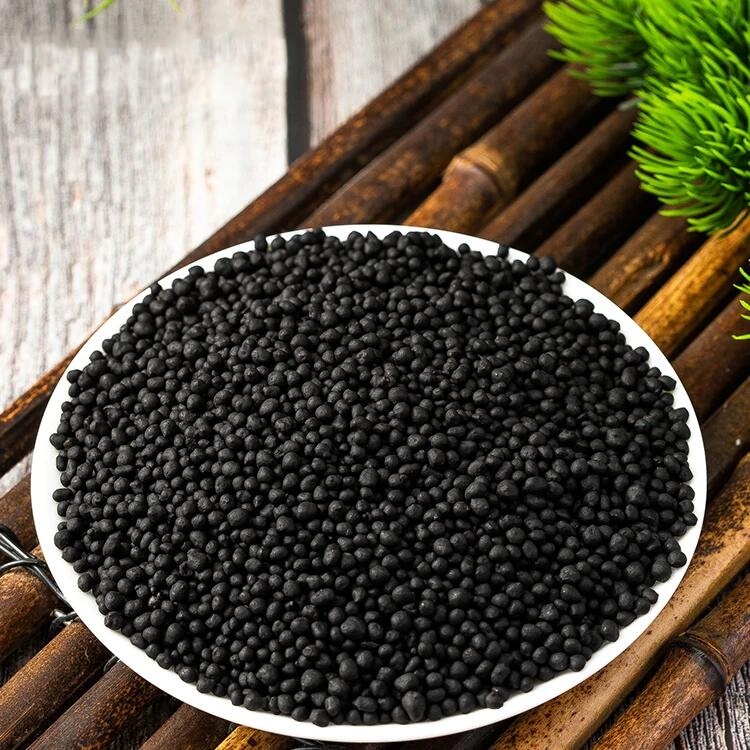In daily production and agricultural applications, many customers have a lack of understanding of humus, humic acid, humates, fulvic acid, and potassium fulvic acid, which wastes energy and time and causes losses in fertilizer production and farming. In order to answer the confusing questions of our customers, the following is elaborated:
1. The difference between humus and humic acid, humate, fulvic acid, brown humic acid and black humic acid:
Humus is a high molecular polymer in soil organic matter. It is formed from the remains of animals and plants (mainly plants) under the action of microorganisms. It contains two major components:
Humic acid – soluble in alkaline solution (also divided into fulvic acid, brown humic acid and black humic acid according to the solubility of different solutions);
Humic matter – insoluble in alkaline solution. Therefore, humic acid is a component of humus, but they all belong to the same type of polymer in terms of molecular structure. It is worth mentioning that humus is mainly a proper term for soil organic matter, while humic acid = covers a wide range, not only in soil, but also in similar acid polymerization in peat, lignite, weathered coal, sludge, garbage, river water, etc. There are also humic acid substances in the food.
2. The difference between humic acid and humate:
What we usually call humic acid is also called humic acid raw powder. It is essentially weathered coal that has been screened and removed from impurities. The essence of weathered coal is organic matter, the essence of organic matter is humus, and the essence of humus is humic acid. However, it is affected by the raw materials. Due to its own limitations, humic acid is insoluble in water. This results in the disadvantages of being difficult to decompose and slow to produce results during agricultural application.
According to the characteristics of humic acid raw powder being soluble in alkaline solutions and insoluble in water and acidic solutions, we use strong alkaline substances such as caustic soda (sodium hydroxide), potassium hydroxide (potassium hydroxide) or ammonia water to activate the humic acid. The resulting product is humate, which is called sodium humate, potassium humate, and ammonium humate in order. This activated humic acid product has the characteristics of high water solubility, high activity, and high chelation, and is mainly used in flushing, drip irrigation and even sprinkler irrigation. Compared with humic acid raw powder, activated humate fertilization can have obvious effects within one week, including a significant improvement in soil water retention and longer crop roots.
3. The difference between potassium humate and potassium fulvic acid:
Potassium fulvic humate is similar to potassium humate and belongs to the humate series. The only difference is that the raw materials used to produce potassium fulvic acid are rich in fulvic acid. The water-soluble humic acid in potassium humate has a polymer structure and has good chelating properties. When the humic acid encounters divalent or higher metal ions such as calcium and magnesium in the water, it will slowly generate flocculation substances and eventually form precipitation. The water used for agricultural production is generally well water, river water, and lake water. Most of it is hard water and contains a large amount of high-priced metal ions. This will inevitably affect the use of fertilizers and even reduce fertilizer efficiency.
Fulvic acid in potassium fulvic acid is a substance with better activity and smaller molecular chain. It can be dissolved in acid, water, and alkali solutions at the same time, and can maintain stability without precipitation, flocculation, or stratification. state. Actual test: Potassium fulvic acid can remain stable in solutions with pH 2-14.
The difference between the two:
A. Similar aspects: After combined with nitrogen, phosphorus, potassium and other elements required by plants, it can become a multi-functional and efficient compound fertilizer, and can be used for soil improvement, plant production stimulator and fertilizer efficiency enhancer.
B. Different aspects: Potassium fulvicate is a high-efficiency macromolecular organic compound. This product can stimulate crops to take root quickly, take root more, and grow robustly. It also increases chlorophyll, Vc content and sugar content, and plays a role in drought, cold, and drought resistance. It has the ability to treat diseases and is also a high-quality complexing agent. This product is fully water-soluble, resistant to acid and alkali, and resistant to divalent ions. It can be co-soluble and compounded with a variety of trace elements and large amounts of elements without flocculation. Used as foliar fertilizer, organic fertilizer, flush fertilizer or the main agent or additive of organic fertilizer.



